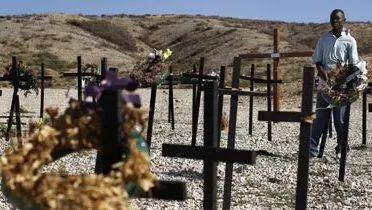Almost 300 million people were affected by natural disasters in 2010. The large disasters provided
constant headlines throughout the year, beginning with the devastating earthquake in Haiti followed
one month later by the even more severe—but far less deadly—earthquake in Chile. In the
spring, ash spewing from volcano Eyjafjallajökull in Iceland paralyzed flights for weeks in the northern
hemisphere. Early summer witnessed the worst Russian wildfires in history while a few months
later, the steadily rising floodwaters in Pakistan covered 20 percent of the country. In sum, it was a
terrible year in terms of natural disasters causing havoc and destruction around the globe. However,
many of the largest disasters barely made headlines in the Western press.
Most notably, over 130 million Chinese were affected by the worst flooding in recent history—this is more than five times the number of people affected by the earthquake in Haiti and the Pakistani floods combined—but the Chinese floods received far less international attention than either Pakistan or Haiti. The example of the Chinese floods illustrates one of the dilemmas in response to natural disasters, which is that disasters, even major ones, receive significantly diverging media coverage. In the case of China, although over 130 million people were affected and some 4,000 were reported killed or missing,1 very little international assistance was provided or requested. There was no overall United Nation funding appeal for those affected. The widely-regarded web-portal Reliefweb posted only 243 entries on the Chinese floods, primarily from the Chinese News Agency, in comparison with 10 times that number of entries on the flooding in Pakistan which occurred several months later in the year and affected around 20 million people.
Apart from the few large—or what some even call mega-disasters—like the Haiti earthquake and the floods in China and Pakistan, the majority of disasters in 2010 were “smaller” disasters. Those disasters, smaller in scope and scale, from the Philippines to Guatemala and from Niger to Venezuela, are also deadly, causing significant human suffering and displacement and had economic, social, and in some instances, political consequences.
The Brookings Institution is committed to quality, independence, and impact.
We are supported by a diverse array of funders. In line with our values and policies, each Brookings publication represents the sole views of its author(s).




